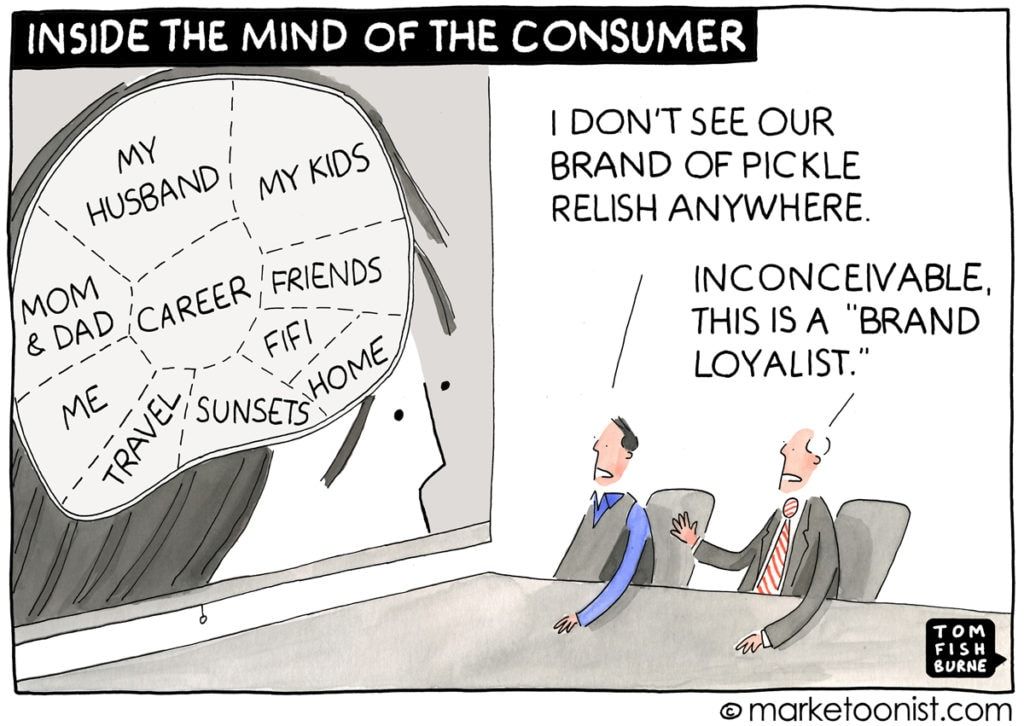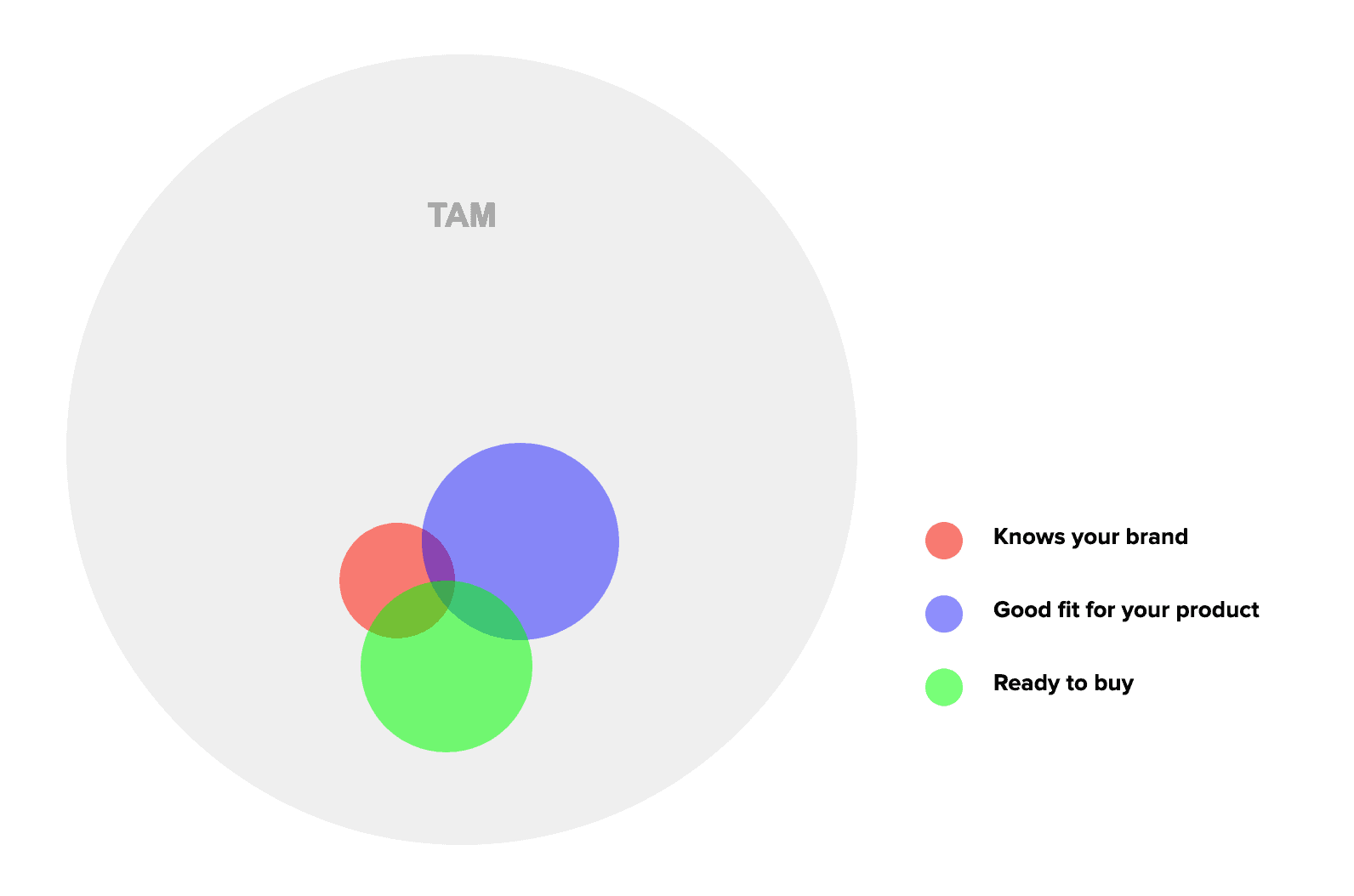Introduction
Byron Sharp is a research professor and Institute director specializing in marketing sciences. In his book How Brands Grow: What Marketers Don’t Know, Sharp challenges traditional marketing perceptions as theoretical and presents more practical marketing approaches. The author uses various scientific methodologies across large financial markets in discussing marketing that promotes brand growth. In the book, the author simplifies and classifies principles of marketing into three laws and seven principles. This paper reviews the various branding approaches the author proposes and their application to consumers behavior.
The Law of Jeopardy
Availability vs. Segmentation
Sharp’s book consists of three parts, where each piece defines and discusses the various laws and connecting principles. The first parts involve discussions on the rule of jeopardy. The law states that smaller brands risk declining their brand sales due to fewer buyers and less customer loyalty (Sharp, 2018). Regarding this rule, the author suggests more product popularity and availability in all markets for brand growth. Sharp argues that the main challenging factor of growing a brand is availability.
Developing a brand needs the consideration of both physical and mental availability. Consumers need the brand’s emotional availability and support while shopping, but most marketing strategies assume that consumers already have a fixed mind of what they want (Fig 1). Most brand consumers use their emotional brain more than careful thought and insight while shopping. For instance, consumers are more subject to impulse buying and only need the emotional or physical push to shop a brand product regardless of cost. In this regard, marketers should be consistent with product availability and use simple names on brand products that customers can remember easily and trigger an emotional reaction when shopping.

Duplication of Purchases Law
Distinction vs. Value Addition
Brands of the same category have similar target markets, creating intense competition which needs effective brand marketing for growth. A factor to consider in ensuring brand popularity and growth is positioning, which refers to how brand marketers want consumers to perceive their products in the emotional mind (Sharp, 2018). Most brand marketing strategies consider the weaknesses of competing brands’ strategies when formulating brand advertising and distribution, for instance, adding a valuable aspect that businesses ignore, thus adding value to its brand.
According to Sharp, this strategy assumes that consumers usually perceive similar products to be the same regardless of the brand, so specifying additional value enables consumers to think differently about the brand. However, the author states that the approach is too vague since consumers do not focus on product value details. Instead, he suggests using distinct features that are easy to identify and remember in consumers’ minds, such as bright color packaging and attractive logos and taglines that instantly trigger a consumer sense.
Law of Buyer Moderation
Penetration vs. Loyalty
This law states that consumers regress over time; therefore, marketing strategies should acquire new customers. According to Sharp, product penetration is the most effective way of growing a brand (Sharp, 2018). Product penetration refers to increasing the number of consumers buying a product through variety. Existing branding strategies focus more on retaining customer loyalty where brands produce large amounts of goods that customers buy frequently. The brands assume manufacturing more products increases availability to keep customers. Yet Sharp contradicts this assumption by stating that producing more items of the exact nature floods the market since consumers cannot buy more than they require because they are available (Sharp, 2018). Thus, Sharp suggests that brands penetrate the competitive market and acquire new clients rather than focus on loyal ones. According to Sharp, consumers’ purchase frequency is the same, and there is no such thing as a frequently bought item. Apart from frequency, Sharp argues that the dynamic changes in marketing approaches among competing products limit customer loyalty.
Price promotions are limited to immediate feedback in promoting large sales. The brand has to consider the long-term impacts of a strategy in enhancing the growth and distribution of a brand product. Sharp argues that most promotional sales come from product loyalists, which does not boost brand penetration. He suggests that instead of advertisements and discounts, brands should invest in the direct availability of the brand to consumers across all markets (Sharp,2018). The author calls the strategy the ‘always-on’ approach, which suggests that brands should always ensure the product is on the consumer’s mind at all times (Fig 2). In summary, Sharp’s seven principles include effective communication and interaction with buyers, fitting brands to consumer preferences, grabbing attention, distinction, consistency, competitiveness, and avoiding dormancy in the market.

Critique
The book is outstanding for individuals who are open to new ventures, particularly consumers’ scientific and psychological mind games. The book provides insight into aspects of the branding and marketing industry, such as exploiting consumer psychology to achieve sales targets and brand growth. Sharp provides reasonable arguments and examples about consumer behaviors which branding businesses should capitalize on in promoting development. For instance, he explains that customer loyalty is temporal or non-existent, which is true in actuality. Most consumers are only loyal if they benefit from interactions such as discounts and sales promotions. Price promotions only help maintain relationships with retailers and have future implications on the brand’s budget if the company focuses on promotions to grow the brand. The book suggests that brand growth requires a lot of popularity than segmentation. Marketing approaches must ensure a product’s popularity and availability in all markets and ensure its consistency at all times. Most people purchase the product due to brand popularity and availability. Thus, marketing strategies must position the products strategically while providing attractive packages that are easy to remember.
I strongly agree with the author’s idea that brands grow through acquiring new customers and focusing on the products’ physical and mental availability to create loyal clients through behavioral interest when shopping. The brand should go to consumers instead of waiting for the consumer to look for it. Businesses should exploit all sales strategies, such as increasing and innovating sales points. Apart from retail shops, a brand can set up sales points closer to consumers, such as parking lots and stalls in busy. Sharp’s psychological marketing strategies aim at winning more customers while retaining loyalists. Generally, Sharp’s techniques are insightful and need practice to demonstrate their effectiveness.
Media Critique
This article discusses Mark Ritson’s critique of Sharp’s book ‘How Brands Grow.’ Ritson is also a brand marketing strategist and consultant for business strategies. Ritson’s argument in the book involves Sharp’s scientific approach as a marketing strategy. According to Ritson, scientifically proposing marketing strategies is absurd and rigid for dynamic markets. Ritson states that marketing strategies should be open-minded, flexible, contextual, and consider the diverse demands. Instead, Sharp’s scientific approaches are restrictive and ‘cold like science’ that is not reasonable practically.
In Ritson’s opinion, segmentation is more important than targeting a broader market. Ritson states that small companies have insufficient funds to reach an extensive market hence using segmentation to acquire new customers. Sharp’s approaches do not consider the small entrepreneur when they own the majority of business enterprises. Riston argues that Sharp’s methods should allow the combination of existing strategies to be more effective. For instance, he suggests that segmentation, consumer targeting, and mass advertising coexist since positioning and distinction are not achievable without a target. I think Ritson’s arguments concerning the book are reasonable when considering small brands. Availability, positioning, and distinction can only work with big brands. Although scientific approaches may seem absurd, the changing dynamics in marketing require applying all possible solutions that show the potential of growing a brand. Thus, the scientific method may be the key considering the emotional brain of consumers.
Conclusion
Marketers should use marketing strategies that focus more on product availability physically and emotionally than brand segmentation and customer differentiation. Applying brand segmentation hinders consumers’ product availability and choices. Particular companies may limit their brands to specific markets to prevent competition, but the competing brands always find a way of sharing the needs. In the book, sharp demonstrates how the success of a brand connects with universal availability rather than market segmentation. Having a universal appeal creates trust in a brand which enhances the emotional perception increasing the brand’s growth. The book cuts the chase on marketing using the same traditional approaches that focus on existing clients and insist on innovation and creating new products that meet consumers’ needs for efficient brand growth.
Reference
Sharp, B. (2018). How brands grow: What marketers don’t know. Oxford University Press.